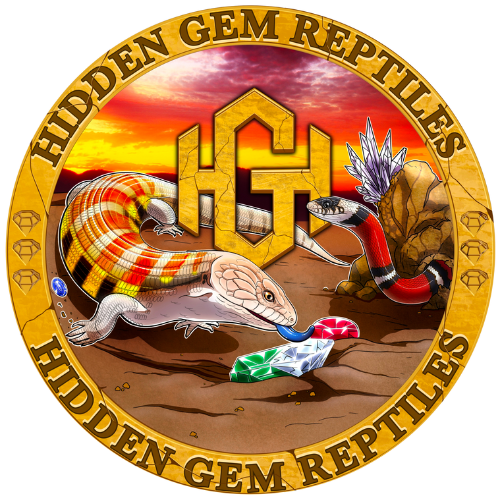BLUE TONGUED SKINK ENCLOSURE
Baby blue tongues should be housed in a plastic reptile enclosures that is 20-gallon with full screen tops. An adult blue-tongued skink requires, at minimum 40 gallon ( 36 in. long X 18 in. wide ) , with a full screen top. Larger is even better.
All blue tongued skinks, both juveniles and adults, are best kept separate. You may be able to house females together, or a male and female pair, but observe them very closely. If they fight, keep them in separate cages. Males should never be kept together.
BLUE TONGUED SKINK LIGHTING AND TEMPERATURE
Blue tongued skink enclosures should have ambient temperatures on the cool side from 75F to 80F. The warm end should include a basking area of 90F to 105F. Heat lamp can often be found at any reptile store or Petsmart
BLUE TONGUED SKINK SUBSTRATE
We use pure organic cypress mulch ( ZooMed’s Forest Floor ) or Coconut husk chip. Blue Tongue Skinks spend their time on the ground, so keep the substrate clean and maintained.
Cork bark or any approved reptile hide. I use corrugated plastic tubing “ T - connectors” from the hardware storeLowe’s and modify them with drill and zip-ties.
BLUE TONGUED SKINK WATER AND HUMIDITY
Clean water should always be accessible in an appropriate water dish. Blue Tongue Skinks are not good swimmers and must be able to easily exit the water bowl. Also be sure the water bowl cannot be easily tipped over. Northern Blue Tongues are from semi-dry areas, and require low humidity with adequate ventilation. They do very well humidity levels ranging between 30% - 50%. Use a hygrometer to monitor humidity levels.
BLUE TONGUED SKINK DIET AND FEEDING
Blue tongued skinks are extremely hardy lizards that will thrive on just about any diet, but a well-balanced diet will result in a more active, healthier Blue Tongue Skink.
We suggest a high quality cat and dog foods : Nature’s Logic , Instinct , Whole Earth or Wellness Core .
Feed a portion the size of your skink head. Feed baby skink daily until they wean themselves down , usually at 3 to 4 months . As adults they should only be feed weekly. Before feeding a calcium D3 powder is sprinkled on top of foods. All these foods do spoil quickly , but it is possible freeze them ( We recommend putting servings in ice cub trays and pull them out to thaw at feeding time.
Babies ( 0 - 2 month ) : Daily
Juveniles ( 2 - 6 month ) : Every other day
Sub - Adults ( 6 - 1 year ) : 2 or 3 time a week
Adults ( 1 year + ) : 1 time a week
HIDES

